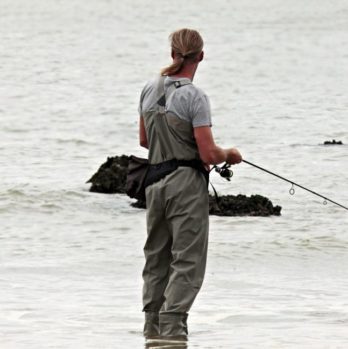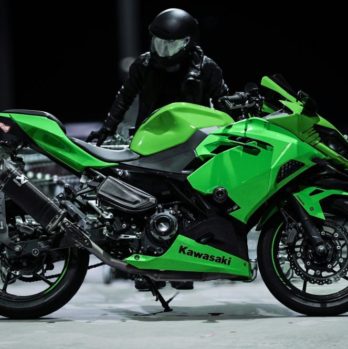EXTREME SKIDING: PUSHING THE LIMITS ON THE SLOPES

Extreme Skiding: Pushing the Limits on the Slopes
Introduction:

Extreme skiing has gained immense popularity in recent years, attracting thrill-seeking adventurers from all corners of the globe. This high-octane sport involves ski enthusiasts pushing their limits on treacherous terrains, gravity-defying jumps, and heart-stopping slopes. In this article, we will provide an in-depth overview of extreme skiing, explore its various types and popularity, delve into quantitative measurements associated with the sport, discuss the differences between different extreme skiing disciplines, and take a historical journey through the pros and cons of various extreme skiing techniques.
An In-Depth Overview of Extreme Skiing
Extreme skiing is a daring sport that goes beyond traditional alpine skiing. It involves tackling steep, ungroomed slopes, deep powder, and even venturing into avalanche-prone areas. The attraction of extreme skiing lies in the adrenaline rush and the thrill of conquering seemingly insurmountable challenges. It requires not only advanced skiing skills but also a deep understanding of mountain safety and awareness.
Types and Popularity of Extreme Skiing
Extreme skiing encompasses various sub-disciplines that cater to different skill sets and preferences. Some popular types include:
1. Big Mountain Skiing: This involves skiing down unconquered, unmarked, and untouched mountains, where natural elements such as cliffs, cornices, and chutes pose formidable challenges.
2. Backcountry Skiing: This type focuses on exploring and skiing in the vast, untamed wilderness, away from traditional ski resorts. Skiers navigate through untracked snow, mountain passes, and forests, embracing a true sense of adventure.
3. Freeride Skiing: Freeride combines elements of freestyle ski jumping with big mountain skiing. Skiers perform exhilarating tricks and jumps off natural features while descending steep, challenging slopes, emphasizing creativity and style.
4. Ski Mountaineering: Ski mountaineers combine their love for ski touring with climbing to ascend peaks and navigate through treacherous terrains. This discipline demands exceptional physical fitness, technical skills, and knowledge of mountain environments.
Quantitative Measurements of Extreme Skiing
Extreme skiing involves more than just thrills and excitement; it also pushes the boundaries of what is physically possible on skis. Here are some quantitative measurements associated with extreme skiing:
1. Speed: Extreme skiers can reach breathtaking speeds of over 100 km/h (62 mph) while descending steep slopes and performing daring jumps.
2. Vertical Drop: The vertical drop measures the difference in elevation between the starting point and the lowest point of a skiing run. Extreme skiers often conquer slopes with drops exceeding 1,000 meters (3,280 feet).
3. Airtime: Airtime refers to the duration extreme skiers spend airborne during jumps and tricks. Some professionals can execute jumps with airtime of several seconds, showcasing their skill and bravery.
Differences Between Different Extreme Skiing Disciplines
While all extreme skiing disciplines share a common thread of pushing limits, there are distinct differences between them. These variations include:
1. Terrain: Big Mountain skiing focuses on steep, rugged, and varied terrains, while backcountry skiing explores remote and untracked landscapes.
2. Objectives: Freeride skiing emphasizes creativity and style with a focus on performing tricks, whereas ski mountaineering combines skiing and mountaineering, with a goal of ascending peaks.
3. Skills Required: Each discipline demands specific skills. Big Mountain skiers need excellent technical skiing skills to navigate challenging terrain, while ski mountaineers require mountaineering expertise for crossing glaciers and climbing.
A Historical Journey through the Pros and Cons of Extreme Skiing
Extreme skiing has evolved over the years, bringing both advantages and disadvantages to the sport. Here’s a historical journey through the pros and cons:
1. Pros:
– Increased accessibility to remote terrains and untapped slopes.
– Adventurous experiences and overcoming personal fears.
– The development of improved safety equipment and techniques.
– Expanding the boundaries of what is possible on skis.
2. Cons:
– Increased risk of accidents, injuries, and avalanches.
– Environmental impacts due to increased traffic in previously untouched areas.
– Potential strain on local rescue services and mountain safety resources.
– Ethical concerns regarding skiing in environmentally sensitive regions.
In conclusion, extreme skiing attracts those seeking an adrenaline rush and the opportunity to conquer seemingly impossible challenges. This article provided a comprehensive overview of extreme skiing, explored its various types and popularity, delved into quantitative measurements, discussed the differences between different disciplines, and took a historical journey through the pros and cons of this thrilling sport. So, strap on your skis, brave the elements, and embark on a thrilling adventure into the world of extreme skiing. Stay safe, have fun, and remember, the slopes are waiting!











